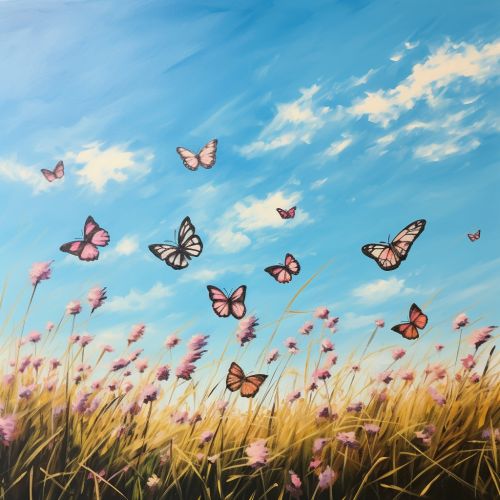The Ecology of Butterfly Migration and Climate Change
Introduction
Butterfly migration is a fascinating phenomenon that has been studied for many years. It involves the movement of butterflies from one geographical location to another, often over long distances. This migration is influenced by a variety of factors, including temperature, food availability, and breeding conditions. However, with the advent of climate change, the ecology of butterfly migration is undergoing significant changes. This article will delve into the intricate relationship between butterfly migration and climate change, exploring the impact of changing weather patterns on these delicate creatures and their migratory patterns.


Butterfly Migration
Butterfly migration is a complex process that involves a series of stages. The most well-known example of butterfly migration is the Monarch butterfly's journey from Canada and the United States to Mexico. However, many other butterfly species also undertake significant migrations, such as the Painted Lady and the Red Admiral.
Butterflies typically migrate to take advantage of seasonal resources and favorable breeding conditions. They often travel thousands of kilometers, utilizing a combination of innate navigation skills and environmental cues to find their way. The exact mechanisms of butterfly navigation are still a subject of ongoing research, but it is believed that they use a combination of the sun's position, the earth's magnetic field, and landscape features to orient themselves.
Impact of Climate Change on Butterfly Migration
Climate change, characterized by global warming, changing weather patterns, and increased frequency of extreme weather events, is having a profound impact on butterfly migration. These changes in climate are affecting the timing, route, and success of butterfly migrations in several ways.
Changes in Timing
One of the most significant impacts of climate change on butterfly migration is changes in timing. Warmer temperatures can lead to earlier emergence of butterflies from their pupal stage, which in turn can lead to earlier migrations. This can disrupt the synchrony between the arrival of butterflies and the availability of food resources at their destination, potentially leading to population declines.
Changes in Route
Climate change can also affect the migration routes of butterflies. Changes in temperature and precipitation patterns can alter the distribution of food resources and suitable breeding sites, forcing butterflies to adjust their migration routes. In some cases, butterflies may even be forced to find entirely new migration routes, which can be a challenging and risky process.
Changes in Success
Finally, climate change can affect the success of butterfly migrations. Extreme weather events, such as storms and heatwaves, can increase mortality during migration. Additionally, changes in habitat quality due to climate change can reduce the survival and reproductive success of butterflies at their destination.
Adaptation Strategies
Butterflies, like all organisms, have the ability to adapt to changing environmental conditions. However, the rapid pace of climate change may outstrip the ability of some butterfly species to adapt. Some of the potential adaptation strategies that butterflies may employ include shifting their migration timing, altering their migration routes, and evolving increased tolerance to new climatic conditions. However, these strategies may not be sufficient to ensure the survival of all butterfly species, particularly those with specialized habitat requirements or limited geographic ranges.
Conservation Implications
The impacts of climate change on butterfly migration have significant implications for butterfly conservation. Changes in migration patterns can lead to population declines or even local extinctions if butterflies are unable to reach suitable breeding sites or find sufficient food resources. Therefore, conservation efforts need to take into account the potential impacts of climate change on butterfly migration.
Conservation strategies could include protecting and restoring butterfly habitats, monitoring butterfly populations and migration patterns, and implementing measures to mitigate the impacts of climate change. Additionally, further research is needed to improve our understanding of the complex relationship between butterfly migration and climate change.
